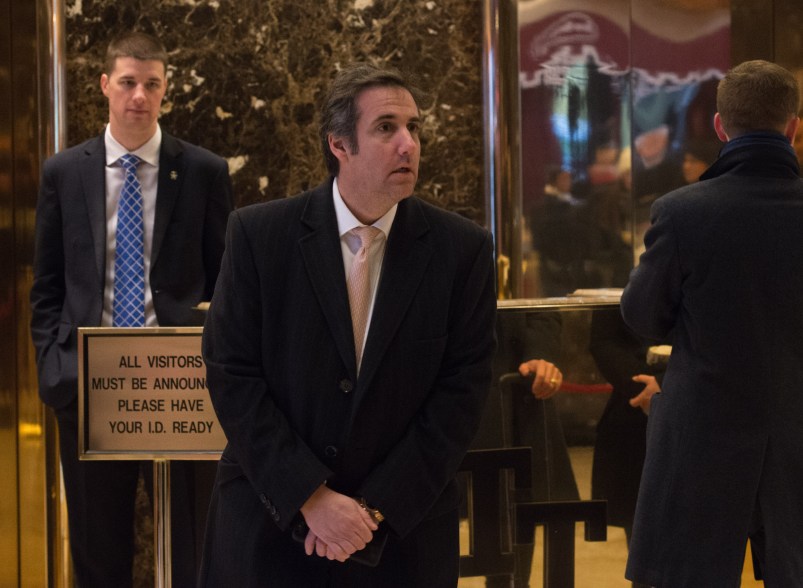Federal prosecutors were granted access on Friday to 12 audio recordings seized from President Trump’s former fixer Michael Cohen.
That development was formalized in a Monday letter by Barbara Jones, the special master overseeing the document review in Cohen’s criminal case. She announced that “the parties” involved no longer wanted to designate the recordings as protected by attorney-client privilege.
“On July 20, 2018, the parties withdrew their designations of ‘privileged’ as to 12 audio items that were under consideration by the special master,” Jones wrote. “Based upon those de-designations, the special master released the 12 items to the government that day.”
Cohen reportedly had a habit of secretly taping conversations. One such chat was a 2016 conversation between Cohen and Trump about hush money payments made to a former Playboy model who claimed to have an affair with Trump, as the New York Times first reported Friday.
Trump’s attorney, Rudy Giuliani, confirmed the report, but said the recording was “exculpatory” and showed no wrongdoing on Trump’s part.
Per CNN, Trump’s attorneys waived attorney-client privilege on his behalf on the recording about ex-Playboy model Karen McDougal, and that it is among the 12 now in the government’s possession. CNN reported that it is the only tape of the 12 that features Trump.
The President appeared to be incensed that his onetime ally recorded their conversation, tweeting that it was “totally unheard of & perhaps illegal” for Cohen to do so.
New York is a “one-party state” that legally permits a person to record someone else without first obtaining consent.







The Cohen-Trump conversation about McDougal was pretty clearly privileged. The question is why Trump’s lawyers decided to waive privilege. Now there are more tapes, and more waivers of privilege. Giuliani asserts that the tapes are “exculpatory”. Exculpatory of what? Trump isn’t being charged with anything. His culpability isn’t on the line. It’s all a bit mystifying–unless, I guess, the conversations disclose merely distasteful but ultimately lawful discussions to pay off certain people, and Trump is doing Cohen a favor in return for…
“Don’t pay McDougal out of the usual Trump Foundation slush fund. Use the special one, marked ‘Melania’s Anniversary Gift.’”
If there was HD video of Trump strangling an incapacitated Russian sex worker to death, Giuliani would claim it was exculpatory.
Once the tapes were found to be prima facie privileged, the logical next step was to determine if there was any applicable exception to the privilege. My guess would be that the DoJ asserted a crime-fraud exception, and Team Trump folded to avoid a public judicial determination that the taped conversations were in furtherance of a crime or fraud.
“Trump’s attorneys waived attorney-client privilege on his behalf on the recording about ex-Playboy model Karen McDougal, and that it is among the 12 now in the government’s possession. CNN reported that it is the only tape of the 12 that features Trump.”
Although the other 11 tapes might not have Trump’s voice, he could indeed be “featured” in some or all of those tapes as the topic of discussion - hence, the “parties” waiving a privilege claim. It’s also possible that some of the tapes include others who may have been considered “clients” of Cohen (Sean, are you paying attention here?).
Note, too that these are just the 12 tapes for which a claim of privilege was made and then withdrawn. How many more are there that didn’t even have a hint of privilege to them?
ETA: And how many more tapes of Trump are still under a privilege review by the Special Master that may be released under a privilege exception?